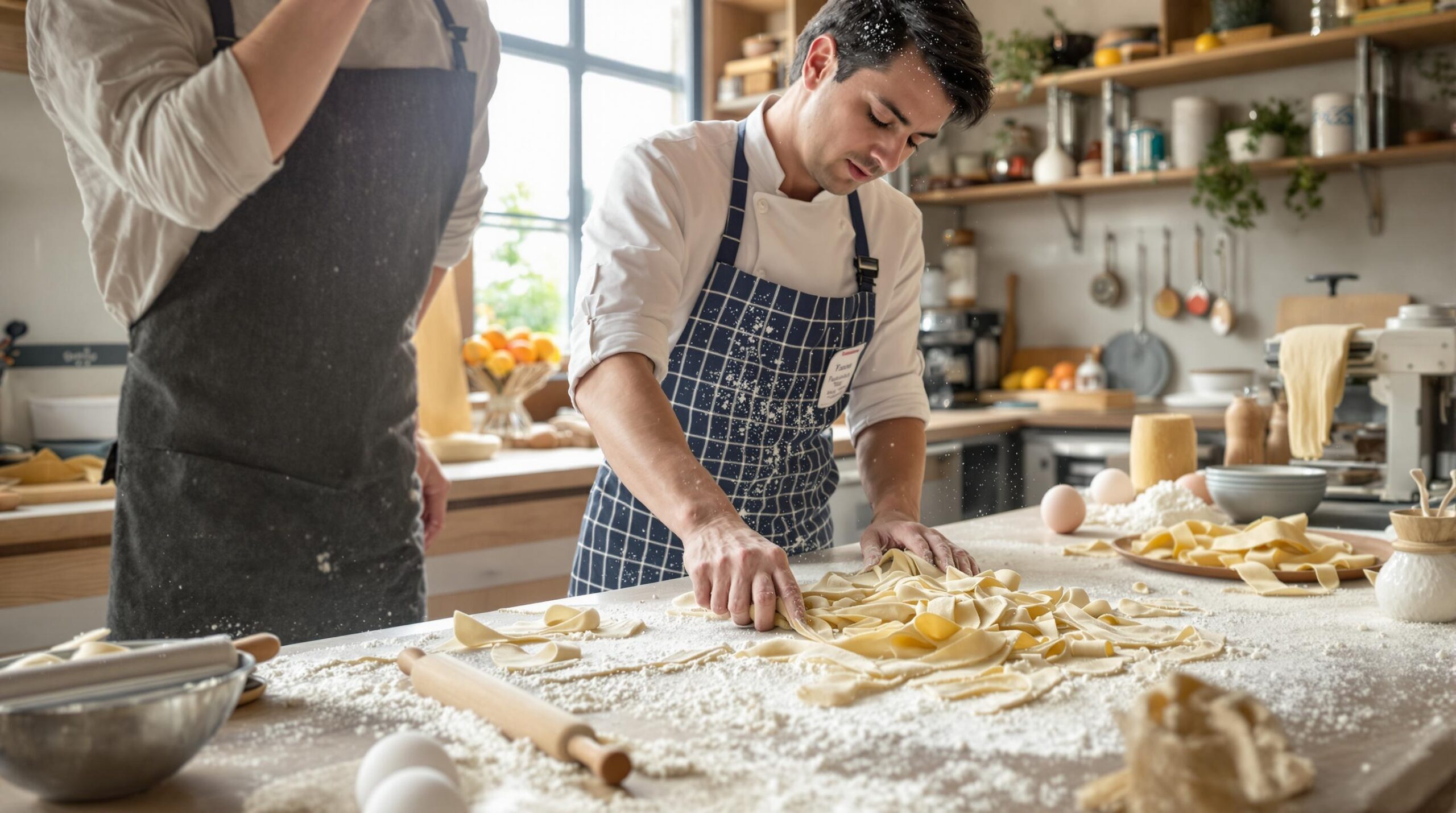Creating homemade pasta can feel daunting, but mastering this craft is achievable and rewarding. The satisfaction of making noodles from scratch enhances culinary experiences and impresses family and friends. Here lies a guide with comprehensive tips and tricks to ensure you produce perfect pasta every time you step into the kitchen.
Selecting the Right Ingredients
Pasta lovers know that quality ingredients form the foundation of delicious noodles. Use 00 flour for the best texture. This finely milled flour, often used in Italian cooking, provides the elasticity pasta requires.
Fresh Eggs Are Essential
Opt for fresh, free-range eggs to enrich the pasta’s flavor. Eggs give the pasta its distinctive golden hue while enhancing its taste and texture.
Water and Salt
Introduce water gradually to control the dough’s moisture content. A pinch of salt helps elevate the noodles’ natural flavors.
The Art of Kneading
Kneading is crucial in developing the dough’s gluten structure, ensuring a firm yet tender texture. Begin by forming the classic flour well on a clean surface and crack eggs into its center.
Mixing and Manipulating the Dough
Mix with a fork, gradually incorporating the flour until a shaggy dough forms. Use your hands to gather the dough, pressing and kneading it consistently for 8-10 minutes.
Achieving the Right Consistency
A well-kneaded dough should feel smooth but firm. If it sticks to your hands, sprinkle additional flour evenly.
Resting the Dough
Allow the dough to rest, which relaxes the gluten fibers and makes rolling easier. Wrap it tightly in plastic wrap to maintain moisture levels.
Patience Pays Off
Let the dough rest for at least 30 minutes at room temperature. This period is critical for the gluten to develop fully.
Chilling for Later Use
If you plan to use the dough later, refrigerate it. Ensure you return it to room temperature before rolling.
Rolling the Dough
Rolling the dough correctly is vital to achieving the ideal thickness. A uniform thickness ensures even cooking and consistent texture.
Pasta Machines: A Worthy Investment
Investing in a pasta-making machine simplifies the rolling process and guarantees evenness. Feed small portions through the machine, gradually decreasing its thickness setting.
Hand-Rolling Techniques
If using a rolling pin, apply even and consistent pressure. Rotate the dough frequently to ensure a uniform circle.
Cutting Your Pasta
The type and shape of pasta depend on personal preferences and intended recipes. Experiment with various cuts to enhance your culinary versatility.
Common Pasta Shapes
Classic shapes include tagliatelle, fettuccine, and pappardelle. Each shape brings out different characteristics in sauces, making them versatile culinary partners.
Using a Pasta Cutter
A pasta cutter or sharp knife ensures precise, clean cuts. Dust your surfaces with flour to prevent sticking while cutting.
Drying and Storing Pasta
Proper drying and storing techniques preserve your homemade pasta’s integrity and prevent clumping during cooking. This step influences both taste and texture during the cooking phase.
The Natural Drying Process
Hang cut pasta strands on a pasta drying rack. If this is not available, use a clean dowel or chair back.
Storing for Future Use
Dried pasta should be stored in airtight containers for a longer shelf life. Fresh pasta should be cooked immediately or refrigerated for up to two days.
Cooking Tips for Perfect Pasta
Cooking fresh pasta demands less time than dried varieties, ensuring its tender and fresh taste stands out.
Achieving Al Dente Perfection
Boil pasta in a large pot of salted water, ensuring each noodle receives even exposure. Test the pasta frequently, aiming for an al dente texture.
Saucing Secrets
Always toss cooked pasta with your choice of sauce immediately. This step allows the noodles to absorb the sauce’s flavors generously.
Troubleshooting Common Pasta Problems
Despite meticulous preparation, issues may arise. Understanding these can aid in quick troubleshooting and improving future batches.
Sticky Dough Solutions
If the dough turns sticky, ensure proper flour usage during kneading and rolling. If possible, adjust the humidity in your workspace.
Uneven Texture Tactics
An uneven texture usually results from inconsistent rolling or insufficient kneading. Practice patience and precision to refine these skills over time.
Conclusion
Creating perfect homemade pasta involves mastering ingredients, techniques, and timing with patience and practice. Focus on each step carefully and adjust based on observations and preferences. Enjoy the deliciously gratifying journey to culinary mastery by crafting noodles that delight every time.
Embrace the art of pasta making, giving homage to a timeless tradition. Your efforts reflect love, craftsmanship, and the joy of sharing good food. Happy cooking, and may your future pasta endeavors yield flawless noodles to savor!


